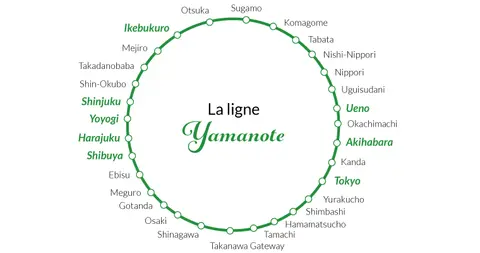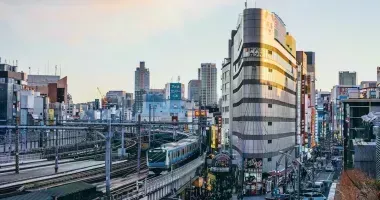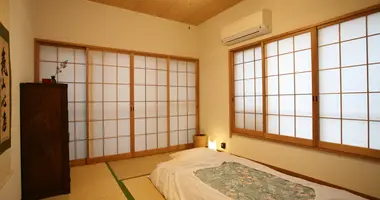The Yamanote, Tokyo's iconic subway line
The Yamanote line, what is it?
The JR Yamanote Line is probably the most popular and convenient way to get around Tokyo. Opened in 1885, it has become essential to the daily life of Tokyoites .
Passing all over Tokyo, it is the perfect line to travel there. It is a "circular" metro line looping through the capital and passing through some of the city's most famous neighborhoods . Shibuya, Ikebukuro, Shinjuku and Akihabara, they are all served by the Yamanote.
Is the Yamanote line accessible to tourists?
The Yamanote line is also very easy to use for travelers passing through Tokyo.
- information and instructions are systematically available in English in the carriages, on the platforms and in the station ,
- important announcements are also made in English ,
- the teams of the JR East company , in charge of the line, will be able to understand you and help you in your travels.
In short, this is the most accessible line in the archipelago for non-Japanese speaking visitors. And in addition, it is cheaper than most of the other lines circulating in Tokyo!

Shinjuku Station

©Kakidai
It is the busiest station in the world with a daily average of around 3.42 million passengers . In addition to the many subway lines that pass there, it is also from Shinjuku station that we can take the bus to other major cities in Japan, longer than the train but much cheaper!
Shinjuku is a mixture of several worlds. First there are the gigantic shopping centers where you will find everything. It is also an important business district with the highest skyscrapers in the capital. Among these, the observatory at the top of the towers of the seat of the metropolitan government of Tokyo offers you a magnificent 360° view of the megalopolis.
Shinjuku is also popular for its nightlife . With its famous Kabukicho district , it has earned a reputation as Tokyo's liveliest district .
Ikebukuro Station

©chensiyuan
In the northwest of Tokyo, the station with the owl mascot is also an important place of passage in the capital. And these are two worlds that meet there.
To the west of the station, the restaurants, pachinko and izakaya, the traditional Japanese bars, have given a certain reputation to the nightlife of the district, which is very lively . And at the eastern exit, there's shopping with malls like Sunshine City and not-to-be-missed department stores like Don Quixote and Japan's largest Pokémon Center.
Our apartments are also located in this area, a few steps from the train station ! They have a perfect location in Tokyo as they allow easy access to all the iconic areas of the city and they will therefore help you to have an unforgettable stay .
Ueno Station

©IQRemix
It is a historic station in Tokyo having been inaugurated in 1883 , at the beginning of the development of railways in Japan. It has an important place in the railway network of the country because the shinkansen (Japanese high-speed trains) towards the north of the archipelago , pass through this station.
From Ueno Station, you can access one of Tokyo's lungs, Ueno Park with its lotus ponds . This is where the Tokyo National Museum , the National Museum of Western Art and the very famous Ueno Zoo are located , where you can meet pandas . Going for a walk from this station, you can also go to Yanaka , a quiet neighborhood with a nostalgic soul.
Akihabara Station

©Hikosaemon
Inaugurated in November 1890, it was opened to the public in 1925 but it was after the Second World War that the activity of Akihabara station increased drastically . Located east of Tokyo, it is undoubtedly one of the most visited by tourists from all over the world.
It is indeed the favorite district of fans of manga, anime but also electronics of all kinds . It is possible to unearth treasures not found elsewhere. And access to Japan's "Electric Town" is very easy thanks to the many signs for the "Akihabara Electric Town Exit" in the basements of the station.
Tokyo station

©baroparo
It is one of the capital's most emblematic stations . It is also the city's main shinkansen station. The recognizable symbol of the station is its west facade, built of brick and having survived from the time of its inauguration in 1914 .
The different parts of this station and its exits are connected by a vast network of underground passages housing shops merging with the surrounding businesses and shopping centres.
The original station is located in the Marunouchi business district and its most recent eastward extension is not far from the luxury shopping district of Ginza . Opposite the station, the Imperial Palace and its park are one of Tokyo's most historic places .




